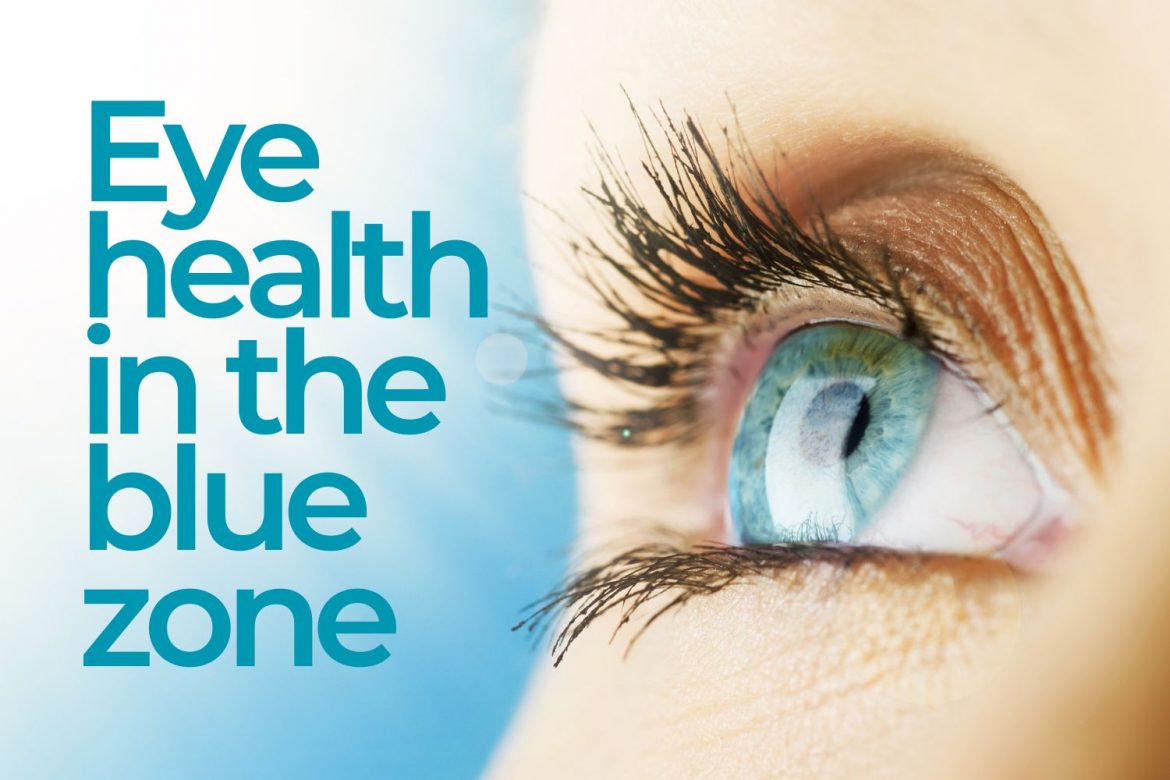
Researchers have long been fascinated by the inhabitants of Blue Zones, the various regions around the world known for having populations with exceptionally long lifespans. People living in Blue Zones typically live the longest lives of anyone in the world, consistently reaching age 100. In contrast, the average life expectancy in the U.S. is currently just over 76 years.
One of the most intriguing, but often overlooked, health aspects is the remarkably better eyesight observed in residents of these Blue Zone communities. From Okinawa, Japan, to Sardinia, Italy, and Nicoya, Costa Rica, individuals in Blue Zones seem to defy the aging process—especially when it comes to their vision and the overall health of their eyes.
There are a number of factors contributing to the superior eyesight of those living in these Blue Zones and also a number of important lessons we can learn from their lifestyle choices.
Dietary habits
Unsurprisingly, diet is a key factor contributing to the superior eyesight of Blue Zone residents. These populations tend to consume nutrient-rich foods that promote eye health.
For instance, the Okinawan diet, characterized by a high intake of sweet potatoes, leafy greens, and fish rich in omega-3 fatty acids, has been linked to a reduced risk of age-related macular degeneration (AMD) and cataracts. Similarly, the Mediterranean diet, prevalent in Sardinia, emphasizes fruits, vegetables, whole grains, and olive oil, providing a wealth of antioxidants and anti-inflammatory compounds that benefit overall eye health.
The emphasis on a plant-based, whole-foods diet in Blue Zones ensures an abundance of vitamins and minerals that are crucial for maintaining healthy vision. These nutrients, such as vitamins A, C, and E, along with zinc and lutein, play essential roles in preventing eye disorders and supporting optimal retinal function. Researchers believe the regular inclusion of these nutrients into daily meals contributes to long-term healthy vision.
Active lifestyles
Physical activity is another integral component observed among those living in Blue Zones, and its positive impact on eyesight cannot be overstated. Regular exercise improves blood circulation, promoting the delivery of oxygen and nutrients essential for eye health. Additionally, exercise has been linked to a reduced risk of several serious eye conditions and diseases, including cataracts, glaucoma, and AMD.
In Blue Zones, a physically active lifestyle is a regular feature of daily routines. Whether it’s walking, gardening, or engaging in traditional dances or community activities, these communities prioritize movement as an essential way of life. These activities not only enhance cardiovascular health but also have been found to contribute to the preservation of eyesight by reducing the risk of eye-related conditions that are typically associated with aging.
Social connections
The strong sense of community and social connections prevalent in cultures and communities within the Blue Zones have been shown to have a profound impact on overall well-being, including eye health.
Chronic stress is a well-documented contributor to various health issues and disease, and the eyes are not exempt from its damaging effects. Prolonged stress is linked to conditions like dry eyes, blurred vision, and even contribute to the development of eye diseases such as Central Serous Chorioretinopathy (CSC)
In Blue Zones, the emphasis on social interactions and support networks has been demonstrated to serve as a buffer against the negative effects of stress. The shared sense of purpose and belonging contributes to lower stress levels, promoting not only a longer life but also sustained visual acuity. The mind-body connection is evident in these communities, where mental well-being is recognized as an integral aspect of overall health, including eye health.
Limited exposure to harmful environmental factors
Blue Zone regions are often found in environments that are free from many of the harmful pollutants prevalent in more urbaniz areas. This reduced exposure to air pollution, excessive screen time, and artificial lighting is believed to have a positive impact on eye health.
Residents of Blue Zones, especially in rural areas, are less likely to experience the eye strain associated with prolonged screen use and exposure to pollutants contributing to preserving their eyesight. While not everyone can avoid exposure to environmental pollutants, there are steps to take to reduce exposure to screen time and artificial lighting.
Cultural practices and natural remedies
Cultural practices and traditional remedies in Blue Zones are also important in maintaining optimal eye health. Many of these communities have long-standing practices involving natural food-based remedies that have been passed down through generations.
For example, in Okinawa, Japan, the consumption of seaweed, rich in minerals and antioxidants, is believed to contribute to sustained eye health. Similarly, natural herbal remedies in Sardinia and Nicoya often involve plants and spices that have known anti-inflammatory and vision-supporting properties.
Health checkups and preventive care
Blue Zone residents prioritize preventive healthcare, including regular eye checkups. The proactive approach to health maintenance ensures that any potential issues are identified and addressed early on, preventing the progression of eye conditions.
A commitment to routine eye examinations also helps to detect conditions such as glaucoma, cataracts, and macular degeneration in their early stages when intervention is most effective.
The eye health benefits of implementing Blue Zone practices
While the exceptional eyesight observed in Blue Zone populations results from a holistic approach to health and well-being, these benefits are not limited to those living in these areas. By using a combination of nutrient-rich diets, active lifestyles, strong social connections, limited exposure to environmental stressors, cultural practices, and regular preventive care, these communities have unlocked the secrets to maintaining superior vision well into old age.
While we may not all be able to live in a Blue Zone, there are valuable lessons to be learned from these communities. Incorporating elements of their lifestyle, such as adopting a plant-based diet, prioritizing physical activity, nurturing social connections, and embracing natural remedies, can contribute to the preservation of our own eye health.
Understanding and implementing the lessons we’ve learned from the Blue Zones can help support a lifetime of clear vision eye health.

